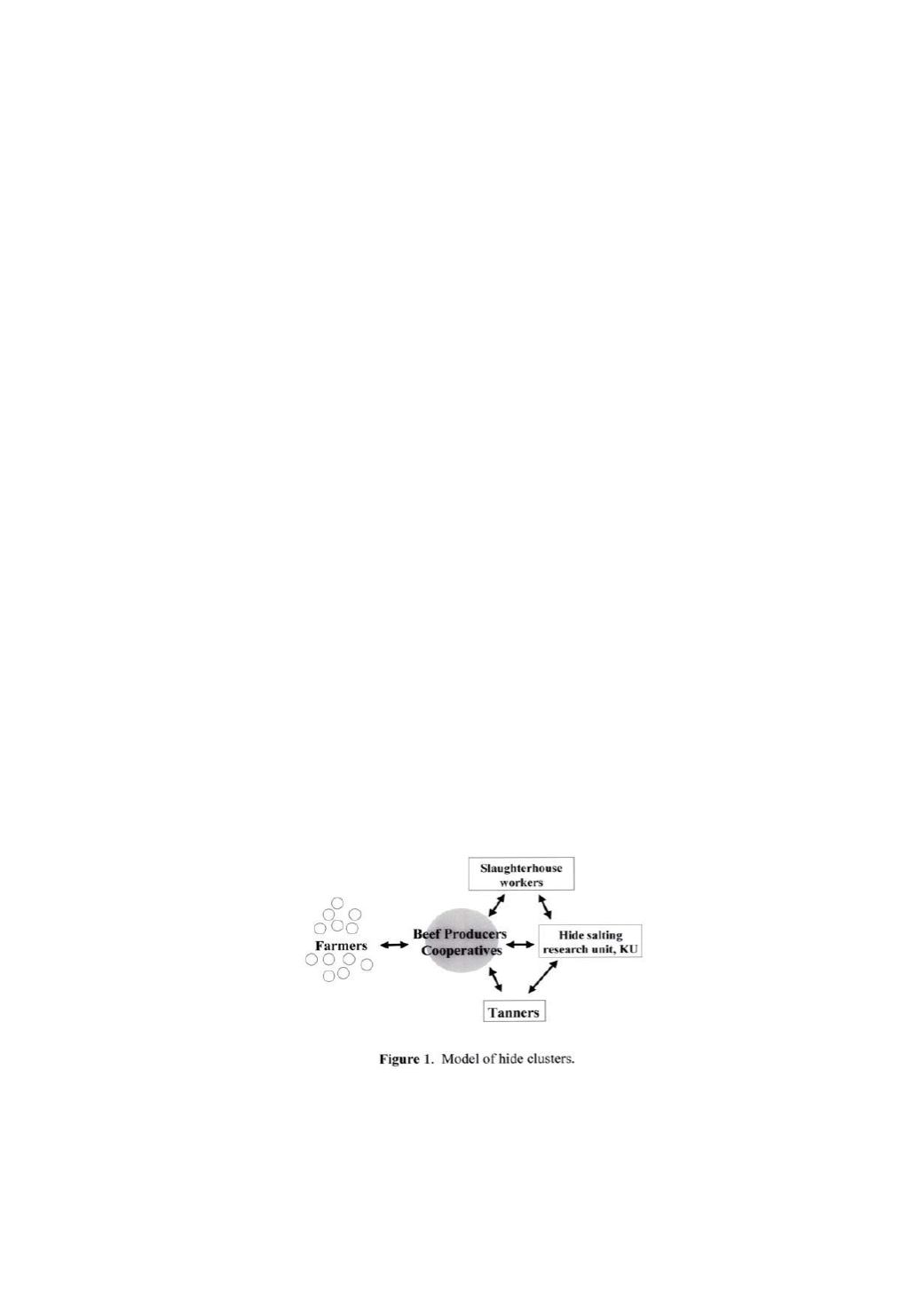
µ¦¦³»
¤ª·
µµ¦Â¨³Á°¨µª·
´
¥ ¤®µª·
¥µ¨´
¥´
¬·
¦´Ê
¸É
19 ¦³Î
µe
2552
know all among them. The practices of an existing supply chain from fresh or salted hides to an end user,
therefore, do not offer any traceable way to the origin of problems for improving quality of hides.
This paper presented the results of an attempt to improve the management of cattle hide in order to
achieve higher added value.
Methodology
Model of hide clusters
A model of hide clusters of related operators, from upstream to downstream, with the mutual aim at
upgrading hide quality was classified to facilitate operational research and development. An assumption was that
beef cooperatives gave one of its services to their farmer members in beef marketing ought to be a core link to
farmer members, slaughterhouse workers, salted hide collectors and tanners, while it was a source of cattle hide
that enabled a systematic approach for traceability.
Methodology for R & D
1.
Hide clusters
. The hide clusters of related operators were formed in order to carry on the study at
Kasetsart University (KU), Kamphaeng Saen (KPS) Campus, Nakhon Pathom, where main facilities were
available, i.e. KU Beef Cooperatives and a small slaughterhouse located. Therefore KU Beef Cooperatives which
was one of the two functioning beef producer cooperatives in Thailand was purposively asked for this
collaborative work. Simultaneously, Thai leather cluster offered to purchase hides from the cooperatives, while
provided the facilities for assessment of hide quality in a tannery at Samut Prakarn Province, about a hundred
kilometers away from KPS Campus. A small research unit for hide salting was built at Buffalo and Beef
Production R&D Center of Suwanvajokkasikit Animal R&D Institute, KU for experiment. Therefore, the hide
clusters were established (Figure 1).
2.
Cattle hide
. The hide of beef breeds containing at least 50%
Bos taurus
breed with less hump was
desirable by this study. Most beef cattle (about 95%) passing through the cooperatives for slaughter was
Kamphaen Saen beef breed (the composite breed of 25% Thai native, 25% Brahman and 50% Charolais), the rest


